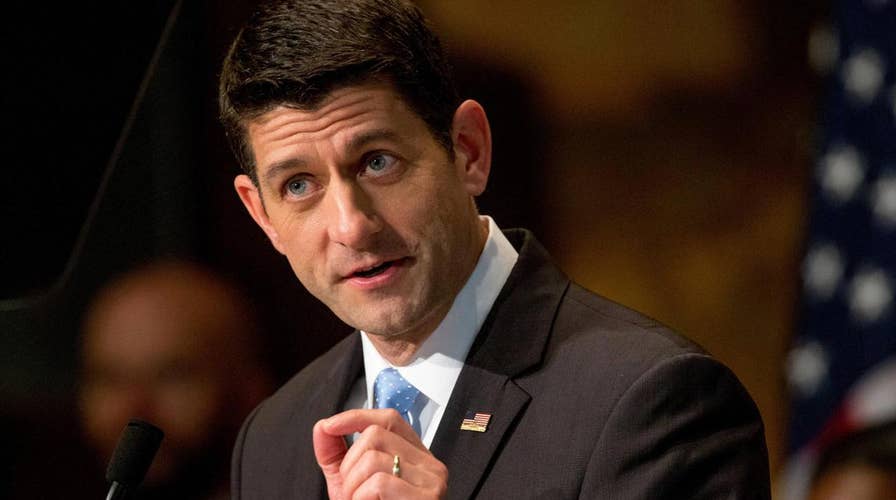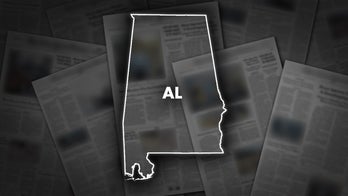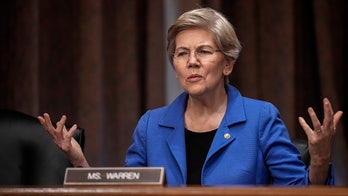Paul Ryan confident Congress will avoid government shutdown
Former GOP budget committee staff director Steve Bell weighs in
The federal debt ceiling is a lot like San Francisco Giants relief pitcher Hunter Strickland.
Unlike Strickland, the debt ceiling doesn’t possess the patience of Job. The debt ceiling doesn’t hold grudges. The debt ceiling doesn’t command a 97 mph, four-seam fastball.
But like Strickland, the ceiling can trigger chaos when it’s ready. The debt ceiling lurks. Sometimes years. You know generally when the debt ceiling’s coming. But you’re never quite sure. And when the debt ceiling arrives, well, pandemonium erupts in Washington. The debt ceiling grooves some chin music, backing the hitter off the dish. That’s usually enough to touch off a political fracas in the sweltering dog days of summer.
Strickland waited. 965 days. Bryce Harper crushed two home runs off Strickland in the 2014 National League Division Series. The second blast sparked jawing between the duo as Harper rounded the bases.
And then Monday, as the San Francisco Giants and Washington Nationals played in a Memorial Day tilt, Strickland plucked Harper on the hip in retaliation. Harper fired his helmet in Strickland’s general direction. The two came to blows near the mound. This triggered the biggest Major League Baseball melee since a 2010 donnybrook between the Cincinnati Reds and St. Louis Cardinals.
We can argue about whether Strickland was in the wrong, whether Harper was silly for charging the mound or what San Francisco Giants catcher Buster Posey -- apparently encased in bronze -- was thinking when he stood statuesque behind the plate, never trying to protect his battery mate.
But when it comes to the debt ceiling, a similar rhubarb is about to erupt on Capitol Hill and at the White House. Much like the Strickland/Harper rumble, this one was years in the making, too.
Treasury Secretary Steven Mnuchin told the House Ways and Means Committee last week that Congress needs to “raise our debt ceiling to pay our debts.”
He asserted he’d prefer a “clean” debt-limit increase to preserve the Treasury Department’s borrowing authority. Mnuchin also warned the panel that he’d like action before Congress departs for the month-long August recess.
Lawmakers thought they had until autumn to wrestle with the debt limit. But White House budget Director Mick Mulvaney derailed that thinking.
Federal “receipts currently are coming in a little bit slower than expected,” Mulvaney said during an appearance before the House Budget Committee.
Congress last grappled with the debt ceiling in fall 2015.
The battle barely qualified for undercard status. Then- President Barack Obama and House Speaker John Boehner, R-Ohio, engineered a deal to fund the government and suspend the debt threshold just as Boehner resigned from Congress.
They wanted to give Obama’s successor -- as well as House Speaker Paul Ryan, R-Wis. -- leeway on fiscal issues. So Boehner and the president shelved the debt ceiling until March 16 of this year. The ceiling fight was virtually an afterthought. Everyone was just glad to avert a government shutdown -- to say nothing of House Republicans finally settling on a new speaker in Ryan.
But everyone knew this fight was coming. It was inevitable since the last big fracas over the debt limit in the summer of 2011. That’s when a Republican-controlled House and Obama stared eye-to-eye in a protracted showdown that threatened to roil the financial markets.
Obama and Boehner are said to have been “close” to crafting a “grand bargain” to fundamentally alter Washington’s fiscal trajectory. They eventually reached an accord that avoided a market shock and imposed the first, major deficit reduction tool in decades: sequestration.
Sequestration is an automatic cut in the amount of spending available for what’s referred to in Washington as “discretionary” spending. Everything but entitlements like Medicare, Medicaid and Social Security. However, a failure to raise the debt ceiling could curb the federal government’s borrowing authority. That could eventually hinder the Treasury Department from making Social Security payments.
When asked about Mnuchin’s call to address the debt in a “clean” fashion (without attachments) and by August, Ryan declared he expected “nothing less from the treasury secretary. They all (sic) say that.” But Ryan added that the “timing is what is the newsworthy thing here.”
He’s right.
The president and congressional Republicans are itching to put a legislative victory on the scoreboard soon. When asked about advancing a health care package, Senate Majority Leader Mitch McConnell, R-Ky., replied the Senate would act “sometime in the near future.”
But so far, there’s no such plan in the Senate that commands 51 votes. There’s a push to complete tax reform. But the House must approve a budget first.
A budget would allow congressional Republicans to avoid a Democratic filibuster, using a special budgetary gambit called “budget reconciliation.” Democrats -- if not Republicans -- could filibuster the tax overhaul if the Senate doesn’t use the budget reconciliation ploy. But, you can’t utilize that maneuver if the House hasn’t first adopted a budget.
Mulvaney argues the budget he authored will balance in a few years. Trump campaigned on balancing the budget. Granted, those things take time. But fiscal hawks will crow when Congress and the president vote on and sign a debt ceiling increase -- even if there’s a sidebar to make significant budgetary cuts.
The debt ceiling saga of 2011 consumed Capitol Hill for weeks. Late-night meetings. Shuttle diplomacy between the White House and Capitol. Congress didn’t tackle many other issues for weeks, until lawmakers voted in favor of a debt ceiling increase in early August. The drama still didn’t prevent Standard & Poor’s from downgrading the federal government’s credit worthiness.
So this fight is coming. The debt ceiling’s been waiting. It’s a lot like Strickland lying in wait for just the right moment nearly three years later to tattoo Bryce Harper.
The debt ceiling will announce its presence sometime this summer. It will arrive like a four-seam fastball. And watch for the brawl to follow.





